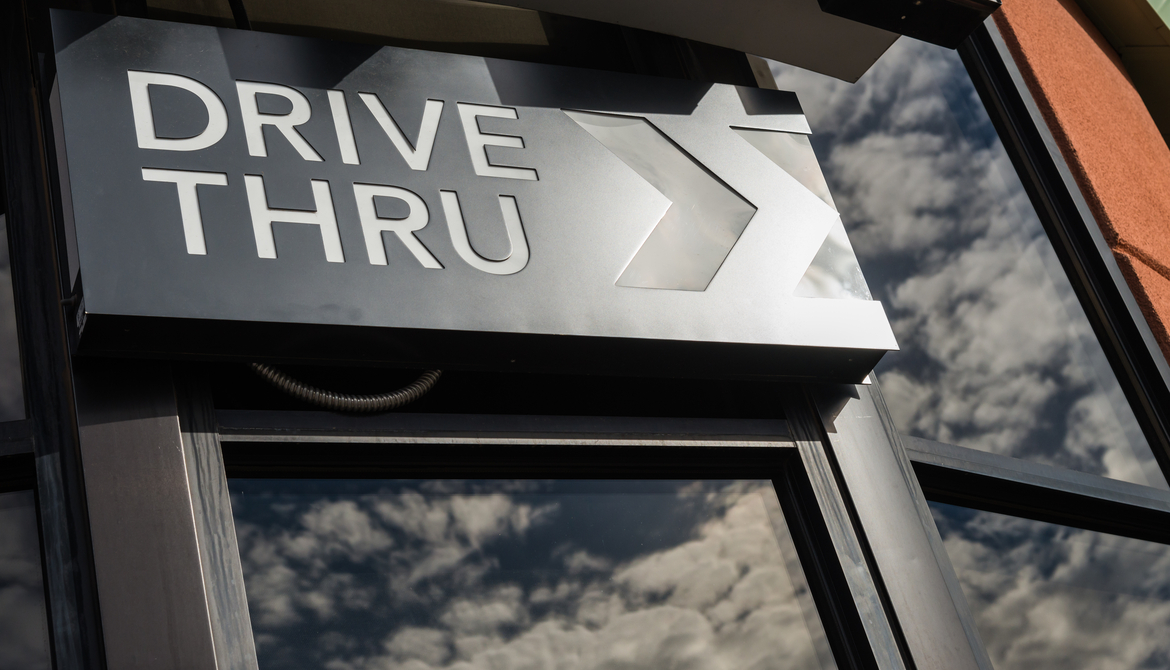5 minutes
As urban centers look to improve safety and reduce emissions, credit unions must determine how best to meet member needs while moving toward the future.
This month, drive-thrus made national news as cities from coast to coast passed ordinances to ban future development. The rationale is to improve pedestrian safety and the quality of urban living, reduce carbon emissions and help eliminate litter (and, in the case of fast food drive-thrus, attempt to reduce obesity). CO2 emissions are often the leading reason—think about how willing we are to wait in our idling cars for a Starbucks almond macchiato or a McDonald’s Big Mac.
David Byrne (from the band The Talking Heads) offers “reasons to be cheerful” in his blog, saying: “Is there anything more absurd than a car in a city? A clunky, oversized contraption awkwardly maneuvering through a confined urban space, like an elephant using a phone booth. No wonder more and more cities are taking steps to cut down on driving. Streets are for transit, bikes and human beings, and you’ll never convince us otherwise.” He concludes: “They’re dangerous, destructive, polluting, expensive, inefficient and inequitable. Now cars are being taken off city streets. That’s progress.”
This sentiment is evident across the country as cities replace car lanes with bicycle paths and consider charging a fee to drive downtown. But, like all things, reality is a spectrum of environments and situations; drive-thrus still have a place at some restaurants, drug stores and financial institutions, both in and outside of urban centers.
Human density in cities will continue to increase alongside mid- and high-rise development and as people want to work and live within walking or short commuting distance, which is a good thing. But this represents less than 1% of U.S. geography. Our country is big, and unlike Europe, mass transit is very limited outside of major urban hubs. We still need cars to travel to most locations. Additionally, many consumers want drive-thrus, as disabled and elderly patrons and families with children find them a necessity rather than a luxury.
One of the earliest instances of drive-thru banking was reported in a 1930 issue of Popular Mechanics, and this innovation saw little change until the invention of ATMs and interactive teller machines. Financial institutions like Bank of America have been widely replacing drive-up tellers with ATMs. Today, many others are adding ITMs to centralize staff resources and bring consistency to the branch experience. But the fact remains that if current and potential members want drive-thrus and credit unions want to attract their patronage, drive-thrus in some form will likely remain an important feature.
There are of course exceptions to the rule. Credit unions that have been successful in automating routine member transactions and keeping human interactions focused on advisory services have the opportunity to reduce or eliminate drive-thrus. Take, for example, BECU in Seattle. The credit union has 1.2 million members, $19.6 billion in assets and 57 locations. Just two of those branches have drive-thrus. Most of its branches are walk-in and located in high pedestrian urban areas or strip malls. These very busy branches are small, often under 2,500 square feet. BECU’s model is to offer ATM service at the entry to each branch. (It also has remote ATMs.) Tellers take no cash, deposit or payment transactions and promote the advantages of remote and online delivery for simple transactions without needing to visit a branch.
This branch delivery model has been embraced by the CU’s membership. Coupled with excellent products and services and a killer marketing program, this model has helped drive BECU to become the largest credit union in Washington, with a net worth ratio of 11.27% and a net promoter score of 74.1. The point is there are many ways to provide physical delivery and be successful.
Many credit unions today are changing their definition of physical delivery through smaller branches, relocations, diverse models to match market opportunities, fewer staff, lower operating costs and transforming branch operations to focus on high-value member engagement rather than transactions. But CUs that want to retain existing branches through this evolution can run into problems, finding themselves asking, “How do we remodel or downsize without losing our drive-thrus?”
We have helped a number of credit unions reimagine their brand experience and delivery model from major remodeling to demolition to a new building. In urban environments, we are often told we cannot rebuild or reopen a drive-thru on the property—while an existing drive-thru may be grandfathered in by a city that has imposed a ban, the drive-thru cannot be torn down and replaced or not be in use for more than one month (such as during construction) and then reopened. In some cases when drive-thrus are allowed, the stacking spaces for the drive-up stations must be expanded beyond reasonable site capacity. Given these constraints, we have used three retention strategies with success:
- Building a room around the existing ATMs and demolishing the building around it, then phasing construction to leave the lanes open.
- Negotiating retention of the drive-thru area while allowing the ATMs to be repositioned. A good deal of space can be retrieved when reconfiguring head-on drive-thrus.
- Agreeing to cut down three lanes to one for single or dual ATMs if stacking lanes and bypass are sufficient.
Drive-thrus are a competitive necessity for some credit unions. Others find them an expensive and antiquated delivery method that needs to be replaced. And still others find their needs fall somewhere in between. The use or closure of drive-thrus is a brand experience decision that must be driven by a clear understanding of your target markets’ true preferences combined with your vision for evolving your credit union into the future.
Paul Seibert, CMC, is an independent facilities and real estate consultant under Paul Seibert Consulting, Seattle.





